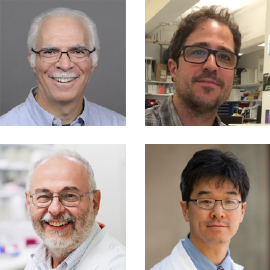
Santa Clara, Calif. — Scientists will present data showing how Bio-Rad’s Droplet Digital PCR (ddPCR) technology can be used for efficient serial monitoring in cancer patients during a Bio-Rad workshop at the Precision Medicine World Conference (PMWC) in Santa Clara, California, January 21–24. The research highlights how ddPCR technology can serve as a powerful complement to the genetic profiling of tumors with next-generation sequencing (NGS), allowing for efficient and timely detection of minimal residual disease and molecular relapse.
NGS is considered the gold standard method for profiling the genetic makeup of tumors, which helps guide treatment decisions and predict therapeutic outcomes. However, following initial treatment, such as surgery, cancer patients may still harbor residual tumor tissue and therefore may be at risk for molecular relapse months or years later. To detect the earliest signs of residual disease or relapse, it is necessary to monitor patients at the molecular level on an ongoing (serial) basis.
Due to its relatively high cost, NGS’s susceptibility to artifacts at low mutant allele frequencies and turnaround time that can take weeks, NGS is not ideal for serial monitoring in routine clinical practice. On the other hand, ddPCR technology can be used to rapidly, precisely, and affordably monitor patients for residual disease and molecular relapse over time.
Through an approach called liquid biopsy, ddPCR technology quantifies genetic material from tumor cells that has been sloughed off and has entered the bloodstream. The concentration of this circulating tumor DNA (ctDNA) correlates with tumor burden more specifically than other blood biomarkers, and therefore its use in a simple blood test can more reliably reveal the presence of residual or recurring tumors. Using ddPCR, one cancer-associated mutation among more than 1,000 — or even 10,000 — wild-type copies can be detected with a turnaround time of a few days. With this data, clinicians gain valuable insights regarding when to add new therapies or to discontinue existing treatments that are not working. Due to the sensitivity of the test, this actionable information is collected well before clinical symptoms present and results are obtained quickly, easily, and affordably.
“NGS informs early treatment decisions, but after treatment initiation — and once the cancer is in remission — oncologists often have to wait for clinical symptoms to reappear before making subsequent treatment decisions,” said George Karlin-Neumann, PhD, Director of Scientific Affairs at Bio-Rad’s Digital Biology Group and chair of the workshop session. “By that time, the oncologist is unfortunately already trailing the cancer by months or even years. Serial monitoring with ddPCR technology enables physicians to detect signs of residual disease and relapse at the earliest possible moment so timely treatment decisions can be made to improve a patient’s outcome.”
Along with Karlin-Neumann, the workshop features panelists Isaac Garcia-Murillas, PhD, Staff Scientist at the Breast Cancer Now Research Centre, The Institute of Cancer Research in London; Alex Drobrovic, PhD, Head, Translational Genomics and Epigenomics, University of Melbourne, Austin Hospital, Heidelberg, Victoria, Australia; and, Hanlee Ji, MD, Assistant Professor, Medicine, Oncology, Stanford University, Palo Alto.
During the session, panelists will discuss how ddPCR technology integrates with NGS to enable precision serial monitoring following diagnosis using several types of genetic cancer biomarkers, including single nucleotide polymorphisms (SNPs) and gene fusions. Dr. Ji will introduce a new method for monitoring ctDNAs using ddPCR technology without synthetic probes, opening the door to even more rapid and inexpensive assays.
The hour-long workshop, titled “Patient-Specific Cancer Monitoring with Droplet Digital PCR,” will be held at 2 PM Thursday, January 23, as part of Track 4. Visit the conference website to learn more about the panelists.
Visit bio-rad.com/digitalPCR to learn more about Droplet Digital PCR applications discussed at PMWC.
BIO-RAD, DDPCR, and DROPLET DIGITAL PCR are trademarks of Bio-Rad Laboratories, Inc. in certain jurisdictions. All trademarks used herein are the property of their respective owner.
About Bio-Rad
Bio-Rad Laboratories, Inc. (NYSE: BIO and BIOb) is a global leader in developing, manufacturing, and marketing a broad range of innovative products for the life science research and clinical diagnostic markets. With a focus on quality and customer service for over 65 years, our products advance the discovery process and improve healthcare. Our customers are university and research institutions, hospitals, public health and commercial laboratories, biotechnology, pharmaceutical, as well as applied laboratories that include food safety and environmental quality. Founded in 1952, Bio-Rad is based in Hercules, California, and has a global network of operations with more than 8,000 employees worldwide. Bio-Rad had revenues exceeding $2.2 billion in 2018. For more information, please visit www.bio-rad.com.
This release may be deemed to contain certain forward-looking statements within the meaning of the Private Securities Litigation Reform Act of 1995. These forward-looking statements include, without limitation, statements we make regarding our expectations regarding our products. Forward-looking statements generally can be identified by the use of forward-looking terminology such as “plan”, “believe,” “expect,” “anticipate,” “may,” “will,” “intend,” “estimate,” “continue,” or similar expressions or the negative of those terms or expressions, although not all forward-looking statements contain these words. Such statements involve risks and uncertainties, which could cause actual results to vary materially from those expressed in or indicated by the forward-looking statements. These risks and uncertainties include our ability to develop and market new or improved products, our ability to compete effectively, international legal and regulatory risks, and product quality and liability issues. For further information regarding our risks and uncertainties, please refer to the “Risk Factors” and “Management’s Discussion and Analysis of Financial Condition and Results of Operation” in Bio-Rad’s public reports filed with the Securities and Exchange Commission, including our most recent Annual Report on Form 10-K and our Quarterly Reports on Form 10-Q. Bio-Rad cautions you not to place undue reliance on forward-looking statements, which reflect an analysis only and speak only as of the date hereof. We disclaim any obligation to update these forward-looking statements.
Press Contact:
Bio-Rad Laboratories, Inc.
Lisa Jensen-Long
520-240-7904
Lisa_Jensen-Long@bio-rad.com
CG Life
Ben Marcus
312-997-2436
bmarcus@cglife.com
